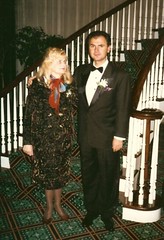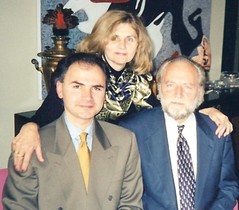Via Flickr:The statue of Laocoön and His Sons, also called the Laocoön Group in the Vatican Museums.The story of Laocoön had been the subject of a now lost play by Sophocles, and was mentioned by other Greek writers. Laocoön was killed after attempting to expose the ruse of the Trojan Horse by striking it with a spear. The snakes were sent either by Apollo or Poseidon,[1] and were interpreted by the Trojans as proof that the horse was a sacred object. The most famous account of these events is in Virgil’s Aeneid (See the Aeneid quotation at the entry Laocoön), but this very probably dates from after the sculpture was made.Various dates have been suggested for the statue, ranging from about 160 to about 20 BC. Inscriptions found at Lindos in Rhodes date Agesander and Athenedoros to a period after 42 BC, making the years 42 to 20 the most likely date for the Laocoön statue’s creation.The statue, which was probably originally commissioned for the home of a wealthy Roman, was unearthed in 1506 near the site of the Golden House of the Emperor Nero (who reigned from 54 to 68 AD), and it is possible that the statue belonged to Nero himself. It was acquired by Pope Julius II, an enthusiastic classicist, soon after its discovery and was placed in the Belvedere Garden at the Vatican, now part of the Vatican Museums. – <a href=
Blog Archives
Mateo Inurria Lainosa
Via Flickr: Born in Córdoba, a city in which he trained as a sculptor, teacher, restorer and decorator. Until 1883 attending courses at the School of Fine Arts, where he also trained notable artistic creators during the last quarter of the nineteenth century Coullaut Lorenzo Valera, Rafael Garcia Guijo, and Romero de Torres brothers, Rafael and July. Between 1883 and 1885 he studied at the School of Painting, Sculpture and Engraving of Madrid. Due to their progress in academic learning, the Provincial Government of Córdoba granted him a stipend to continue his studies in Madrid until 1890, when Inurria was presented at the National Exhibition of Fine Arts, his work “A drowning man,” had such realism that it encountered much criticism.
Standing Woman by Gaston Lachaise
Via Flickr:Gaston Lachaise, French-American, 1882-1935.Standing Woman-1932.
Floating Figure by Gaston Lachaise
Via Flickr:Gaston Lachaise, French-American, 1882-1935.Floating Figure-1927.







